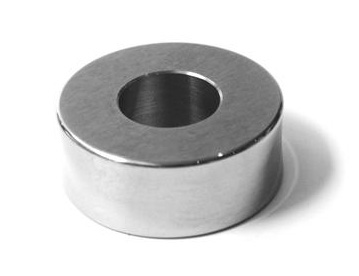

The service life of cemented carbide molds is related to the service conditions, design and manufacturing process, installation, use and maintenance of the mold. Therefore, to improve the life of the mold, it is necessary to adopt corresponding measures to improve these conditions. The main factors affecting the life of the mold are described as follows.

(1) The impact of mold structure design on mold life. The rationality of mold structure has a great impact on the load-bearing capacity of the mold; unreasonable structure may cause severe stress concentration or excessively high working temperature, thereby deteriorating the work of the mold Conditions, leading to premature failure of the mold. The mold structure includes the geometry of the working part of the mold, the size of the transition angle, the structure of the clamping, guiding, and ejecting mechanism, the mold gap, the aspect ratio of the punch, the end face inclination angle, the cooling water circuit and the assembly structure in the hot work mold.
(2) The influence of cemented carbide mold material on mold life The influence of mold material on mold life is a comprehensive reflection of mold material types, chemical composition, organizational structure, hardness and metallurgical quality, among which material type and hardness have the most obvious influence. The type of mold material has a great influence on the life of the mold. Therefore, when selecting mold materials, the mold materials should be selected reasonably according to the batch size of the parts. The hardness of the working parts of the mold also has a great influence on the life of the mold, but it is not that the higher the hardness, the longer the life of the mold.
It can be seen that the hardness of cemented carbide molds must be determined according to the forming properties and failure modes, and the hardness, strength, toughness, wear resistance, fatigue strength, etc. should be matched to the best required for forming. The influence of the metallurgical quality of the material on the life of the mold cannot be ignored, especially high-carbon alloy steel, which has many metallurgical defects, which are often the root causes of mold quenching cracking and early mold failure. Therefore, improving the metallurgical quality of the material is also an important aspect of improving the life of the mold.
What is the fracture resistance strength of cemented carbide molds?
One-time brittle fracture resistance: cemented carbide molds can characterize the one-time brittle fracture resistance indexes for one-time impact fracture energy, compressive strength and flexural strength.
Fatigue fracture resistance: It is characterized by the number of fracture cycles under a certain cyclic load or the load value that causes the specimen to fracture in the specified number of cycles. Cemented carbide molds can be broken by multiple impact fracture energy or multiple impact fracture with small energy Life, tension-compression fatigue strength or fatigue life, contact fatigue strength or contact fatigue life are several indicators to reflect.
Crack fracture resistance: When there are micro-cracks in the cemented carbide mold, its fracture resistance is greatly weakened. Therefore, the fracture resistance of the cracked body cannot be evaluated by using the various fracture resistance tested by the smooth sample. According to the theory of fracture mechanics, the fracture toughness index can be used to characterize the fracture resistance of the cracked body.
Hot information

